The Hagaddah which is recited at the Seder on the first night of Passover retells the biblical story of the infliction of the ten plagues on Egypt and the exodus of the Israelites slaves. One four verse passage referencing chapter 12 in the book of Exodus stands out in the narrative because of the redundant emphasis on who was responsible for these acts:
- “I will pass through the land of Egypt”, I and not an angel;
- ”And I will smite every first-born in the land of Egypt”, I and not a seraph;
- ”And I will carry out judgment against all the gods of Egypt”, I and not a messenger;
- ”I G-d”, and none other!
;וְעָבַרְתִּי בְאֶרֶץ מִצְרַיִם בַּלַּיְלָה הַזֶּה – אֲנִי וְלֹא מַלְאָךְ
;וְהִכֵּיתִי כָל בְּכוֹר בְּאֶרֶץ־מִצְרַים. אֲנִי וְלֹא שָׂרָף
;בְכָל־אֱלֹהֵי מִצְרַיִם אֶעֱשֶׂה שְׁפָטִים. אֲנִי וְלֹא הַשָּׁלִיח
.ואֲנִי ה’. אֲנִי הוּא וְלֹא אַחֵר
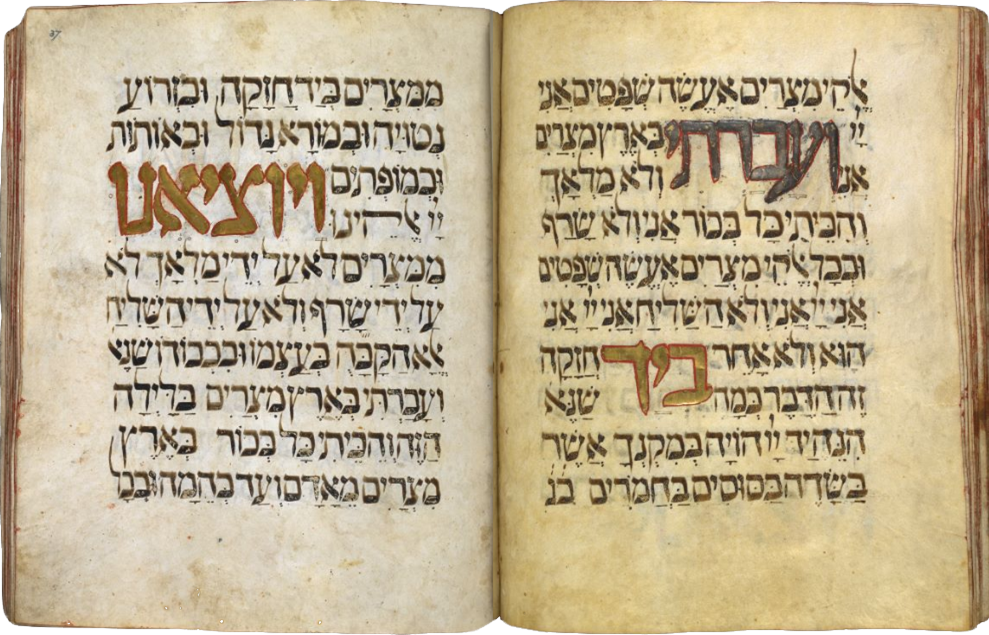 Image 1: The passage in the Golden Hagaddah circa 1320 CE
Image 1: The passage in the Golden Hagaddah circa 1320 CE
The context of the verses makes it clear that G-d alone inflicted the punitive measures and that they were executed directly by Him and not through other intermediaries like an angel, seraph, or messenger. Further support for this can be found in verse 12:12:
“For I will go through the land of Egypt on that night and will smite all the first-born in the land of Egypt, both man and beast; and against all the gods of Egypt I will execute judgment: I am G-d. “
וְעָבַרְתִּי בְאֶרֶץ-מִצְרַיִם, בַּלַּיְלָה הַזֶּה, וְהִכֵּיתִי כָל-בְּכוֹר בְּאֶרֶץ מִצְרַיִם, מֵאָדָם וְעַד-בְּהֵמָה; וּבְכָל-אֱלֹהֵי מִצְרַיִם אֶעֱשֶׂה שְׁפָטִים, אֲנִי יְהוָה
But despite this clear and repetitive language regarding G-d’s direct responsibility, some Jewish and Christian scholars argue that the term “destroyer” used in verse 12:23 does not refer to G-d and should instead be read as the “angel of death”. They also postulate that G-d doesn’t act directly or get involved in the ‘hands-on’ day to day minutiae. Thus, he must have been using an agent of some sort to perform this work.
This textual dichotomy has been the source of endless arguments between theologians, translators and scholars. For example, the Pseudo-Jonathan Targum (translation) of Exodus 12 uses both the terms מַלְאָכָא מְחַבְּלָא (Aramaic for “destroying angel”) and מַלְאָךְ מוֹתָא, (Aramaic for the “angel of death”). Obviously, this interpretation suggests that besides G-d there is another entity—angelic or otherwise—with a certain degree of autonomy at work here.
From the contextual point of view, the arguments in favor of an angelic agent raise a number of questions about the role of this “destroyer” and the scope of his responsibility and autonomy. For example, can this destroyer exercise free judgment? Is he constrained by any boundaries?
The Hebrew bible emphasizes the idea that the entire universe falls under G-d’s jurisdiction and that all of nature falls under his control. He is the creator of light and darkness, good and evil. As Genesis 1:31 and Isaiah 45:7 state, He is the creator of all things:
“And G-d saw every thing that He had made, and, behold, it was very good. And there was evening and there was morning, the sixth day.”
וַיַּרְא אֱלֹהִים אֶת-כָּל-אֲשֶׁר עָשָׂה, וְהִנֵּה-טוֹב מְאֹד; וַיְהִי-עֶרֶב וַיְהִי-בֹקֶר, יוֹם הַשִּׁשִּׁי
“I form the light, and create darkness; I make peace, and create evil; I am G-d, that doeth all these things.”
יוֹצֵר אוֹר וּבוֹרֵא חֹשֶׁךְ, עֹשֶׂה שָׁלוֹם וּבוֹרֵא רָע; אֲנִי יְהוָה, עֹשֶׂה כָל-אֵלֶּה
The scripture also makes it clear that G-d is not dependent on his creation and the creation cannot exist independently of Him. Even Satan’s depiction in Job 1.7 illustrates that he is not a rival of G-d nor does he possess the ability to oppose him in any way, he is just one of many tools that G-d uses to maintain the world in working moral order. Job 1.21 further reinforces the idea that the life and death cycle entirely emanates from G-d:
“And he said; naked came I out of my mother’s womb, and naked shall I return thither; G-d gave, and G-d hath taken away; blessed be the name of G-d.”
וַיֹּאמֶר עָרֹם יָצָתִי מִבֶּטֶן אִמִּי, וְעָרֹם אָשׁוּב שָׁמָּהיְהוָה נָתַן, וַיהוָה לָקָח; יְהִי שֵׁם יְהוָה, מְבֹרָךְ
So if the scripture consistently states that G-d has complete and undisputed sovereignty, what then is the basis for the existence of an independent angelic agent who manages death, destruction, and the afterlife?
Broadly speaking, the source for this argument can be classified into these three categories of references:
- Specific scriptural terminology such as: Abaddon, destroyer, messengers of death, angel that destroys, executioner, slayer, angel of G-d, Ashmedai, Satan, the harvester of souls, the angel that smites, serpent, adversary, captain of the host of G-d, leviathan the slant serpent, leviathan the tortuous serpent, and dragon
- Allegorical Sources such as: Personification of death in the scripture, messengers of death, Day-Star, cherub that walks on stones of fire, and anointed cherub
- Legends and Commentary Sources such as: Testament of Solomon, The Zohar, The Talmud, the book of Tobit, and Thanksgiving Hymns
Specifically, these implied angelic associations can be found in some of the following passages:
Now the serpent was more subtle than any beast of the field which G-d had made. And he said unto the woman: ‘Yea, hath G-d said: Ye shall not eat of any tree of the garden?’
וְהַנָּחָשׁ, הָיָה עָרוּם, מִכֹּל חַיַּת הַשָּׂדֶה, אֲשֶׁר עָשָׂה יְהוָה אֱלֹהִים; וַיֹּאמֶר, אֶל-הָאִשָּׁה, אַף כִּי-אָמַר אֱלֹהִים, לֹא תֹאכְלוּ מִכֹּל עֵץ הַגָּן
“For G-d will pass through to smite the Egyptians; and when He seeth the blood upon the lintel, and on the two side-posts, G-d will pass over the door and will not suffer the destroyer to come in unto your houses to smite you.”
וְעָבַר יְהוָה, לִנְגֹּף אֶת-מִצְרַיִם, וְרָאָה אֶת-הַדָּם עַל-הַמַּשְׁקוֹף, וְעַל שְׁתֵּי הַמְּזוּזֹת; וּפָסַח יְהוָה, עַל-הַפֶּתַח, וְלֹא יִתֵּן הַמַּשְׁחִית, לָבֹא אֶל-בָּתֵּיכֶם לִנְגֹּף
And he said: ‘Nay, but I am captain of the host of G-d; I am now come.’ And Joshua fell on his face to the earth, and bowed down, and said unto him: ‘What saith my lord unto his servant?’
וַיֹּאמֶר לֹא, כִּי אֲנִי שַׂר-צְבָא-יְהוָה–עַתָּה בָאתִי; וַיִּפֹּל יְהוֹשֻׁעַ אֶל-פָּנָיו אַרְצָה, וַיִּשְׁתָּחוּ, וַיֹּאמֶר לוֹ, מָה אֲדֹנִי מְדַבֵּר אֶל-עַבְדּוֹ
And he showed me Joshua the high priest standing before the angel of G-d, and Satan standing at his right hand to accuse him.
וַיַּרְאֵנִי, אֶת-יְהוֹשֻׁעַ הַכֹּהֵן הַגָּדוֹל, עֹמֵד, לִפְנֵי מַלְאַךְ יְהוָה; וְהַשָּׂטָן עֹמֵד עַל-יְמִינוֹ, לְשִׂטְנוֹ
thou wast in Eden the garden of G-d; every precious stone was thy covering, the carnelian, the topaz, and the emerald, the beryl, the onyx, and the jasper, the sapphire, the carbuncle, and the smaragd, and gold; the workmanship of thy settings and of thy sockets was in thee, in the day that thou wast created they were prepared.
בְּעֵדֶן גַּן-אֱלֹהִים הָיִיתָ, כָּל-אֶבֶן יְקָרָה מְסֻכָתֶךָ אֹדֶם פִּטְדָה וְיָהֲלֹם תַּרְשִׁישׁ שֹׁהַם וְיָשְׁפֵה, סַפִּיר נֹפֶךְ, וּבָרְקַת וְזָהָב; מְלֶאכֶת תֻּפֶּיךָ וּנְקָבֶיךָ בָּךְ, בְּיוֹם הִבָּרַאֲךָ כּוֹנָנוּ
Now it fell upon a day, that the sons of G-d came to present themselves before G-d, and Satan came also among them.
וַיְהִי הַיּוֹם–וַיָּבֹאוּ בְּנֵי הָאֱלֹהִים, לְהִתְיַצֵּב עַל-יְהוָה; וַיָּבוֹא גַם-הַשָּׂטָן, בְּתוֹכָם
The wrath of a king is as messengers of death; but a wise man will pacify it.
חֲמַת-מֶלֶךְ מַלְאֲכֵי-מָוֶת; וְאִישׁ חָכָם יְכַפְּרֶנָּה
Yea, his soul draweth near unto the pit, and his life to the destroyers.
וַתִּקְרַב לַשַּׁחַת נַפְשׁוֹ; וְחַיָּתוֹ, לַמְמִתִים
How art thou fallen from heaven, O day-star, son of the morning! How art thou cut down to the ground, that didst cast lots over the nations!
אֵיךְ נָפַלְתָּ מִשָּׁמַיִם, הֵילֵל בֶּן-שָׁחַר; נִגְדַּעְתָּ לָאָרֶץ, חוֹלֵשׁ עַל-גּוֹיִם
In that day the LORD with His sore and great and strong sword will punish leviathan the slant serpent, and leviathan the tortuous serpent; and He will slay the dragon that is in the sea.
בַּיּוֹם הַהוּא יִפְקֹד יְהוָה בְּחַרְבּוֹ הַקָּשָׁה וְהַגְּדוֹלָה וְהַחֲזָקָה, עַל לִוְיָתָן נָחָשׁ בָּרִחַ, וְעַל לִוְיָתָן, נָחָשׁ עֲקַלָּתוֹן; וְהָרַג אֶת-הַתַּנִּין, אֲשֶׁר בַּיָּם
And the angel of G-d went forth, and smote in the camp of the Assyrians a hundred and fourscore and five thousand; and when men arose early in the morning, behold, they were all dead corpses.
.וַיֵּצֵא מַלְאַךְ יְהוָה, וַיַּכֶּה בְּמַחֲנֵה אַשּׁוּר, מֵאָה וּשְׁמֹנִים וַחֲמִשָּׁה, אָלֶף; וַיַּשְׁכִּימוּ בַבֹּקֶר, וְהִנֵּה כֻלָּם פְּגָרִים מֵתִים
The wrath of a king is as messengers of death; but a wise man will pacify it.
חֲמַת-מֶלֶךְ מַלְאֲכֵי-מָוֶת; וְאִישׁ חָכָם יְכַפְּרֶנָּה
Set Thou a wicked man over him; and let an adversary stand at his right hand.
הַפְקֵד עָלָיו רָשָׁע; וְשָׂטָן, יַעֲמֹד עַל-יְמִינוֹ
”And when the angel stretched out his hand toward Jerusalem to destroy it, G-d repented Him of the evil, and said to the angel that destroyed the people: ‘It is enough; now stay thy hand.’ And the angel of G-d was by the threshing-floor of Araunah the Jebusite.”
וַיִּשְׁלַח יָדוֹ הַמַּלְאָךְ יְרוּשָׁלִַם, לְשַׁחֲתָהּ, וַיִּנָּחֶם יְהוָה אֶל-הָרָעָה, וַיֹּאמֶר לַמַּלְאָךְ הַמַּשְׁחִית בָּעָם רַב עַתָּה הֶרֶף יָדֶךָ; וּמַלְאַךְ יְהוָה הָיָה, עִם-גֹּרֶן האורנה (הָאֲרַוְנָה) הַיְבֻסִי
So G-D sent a pestilence upon Israel; and there fell of Israel seventy thousand men.
וַיִּתֵּן יְהוָה דֶּבֶר, בְּיִשְׂרָאֵל; וַיִּפֹּל, מִיִּשְׂרָאֵל, שִׁבְעִים אֶלֶף, אִישׁ
And G-d sent an angel unto Jerusalem to destroy it; and as he was about to destroy, G-d beheld, and He repented Him of the evil, and said to the destroying angel: ‘It is enough; now stay thy hand.’ And the angel of G-d was standing by the threshing-floor of Ornan the Jebusite.
וַיִּשְׁלַח הָאֱלֹהִים מַלְאָךְ לִירוּשָׁלִַם, לְהַשְׁחִיתָהּ, וּכְהַשְׁחִית רָאָה יְהוָה וַיִּנָּחֶם עַל-הָרָעָה, וַיֹּאמֶר לַמַּלְאָךְ הַמַּשְׁחִית רַב עַתָּה הֶרֶף יָדֶךָ; וּמַלְאַךְ יְהוָה עֹמֵד, עִם-גֹּרֶן אָרְנָן הַיְבוּסִי
And David lifted up his eyes, and saw the angel of G-d standing between the earth and the heaven, having a drawn sword in his hand stretched out over Jerusalem. Then David and the elders, clothed in sackcloth, fell upon their faces.
וַיִּשָּׂא דָוִיד אֶת-עֵינָיו, וַיַּרְא אֶת-מַלְאַךְ יְהוָה עֹמֵד בֵּין הָאָרֶץ וּבֵין הַשָּׁמַיִם, וְחַרְבּוֹ שְׁלוּפָה בְּיָדוֹ, נְטוּיָה עַל-יְרוּשָׁלִָם; וַיִּפֹּל דָּוִיד וְהַזְּקֵנִים מְכֻסִּים בַּשַּׂקִּים, עַל-פְּנֵיהֶם
And it came to pass that night, that the angel of G-d went forth, and smote in the camp of the Assyrians a hundred fourscore and five thousand; and when men arose early in the morning, behold, they were all dead corpses.
וַיְהִי, בַּלַּיְלָה הַהוּא, וַיֵּצֵא מַלְאַךְ יְהוָה וַיַּךְ בְּמַחֲנֵה אַשּׁוּר, מֵאָה שְׁמוֹנִים וַחֲמִשָּׁה אָלֶף; וַיַּשְׁכִּימוּ בַבֹּקֶר, וְהִנֵּה כֻלָּם פְּגָרִים מֵתִים
Shall I ransom them from the power of the nether-world? Shall I redeem them from death? Ho, thy plagues, O death! Ho, thy destruction, O nether-world! Repentance be hid from Mine eyes!
מִיַּד שְׁאוֹל אֶפְדֵּם, מִמָּוֶת אֶגְאָלֵם; אֱהִי דְבָרֶיךָ מָוֶת, אֱהִי קָטָבְךָ שְׁאוֹל–נֹחַם, יִסָּתֵר מֵעֵינָי
Early Sources
The argument advocating for the concept of an independent destroyer goes back to dawn of Egyptian and Canaanite religions. Egyptian texts that describe Osiris as the god of the dead and the lord of underworld date as early as 2500 BCE. According to passages in the book of the dead, after death, the deceased would face forty-two divine judges that evaluated If he lived in conformance with the guidelines of goddess Ma’at, who represented truth and rightness living. If they passed the test, they were welcomed into the heavenly kingdom of Osiris. If they failed, they did not share in eternal life and were taken by Ammit, the “devourer” and subjected to terrifying punishments and then thrown to the soul-eating demons in hell. Sort of Dante’s inferno, Egyptian style.
Ones in hell, the goddess Sekhmet inflicted further punishments on them in the place of “destruction”. The dead were thrown into lakes of fire kindled by flame spitting snakes, where demons fed on the victims entrails and drank their blood. The demons then butchered and hacked their victims to pieces and burned them with inextinguishable fire, in deep pits or in cauldrons, where they were scorched, cooked, and reduced to ashes.

Image 2: Egyptian view of hell
Not as detailed as the Egyptian book of the dead, the Canaanites developed similar concepts about their god of death and the underworld.
The Canaanite deity Mavet מָוֶת ![]() (who shares some traits with Osiris), played a central role in the The Baal Cycle written circa 1500 BCE. The hymn describes the god of death and the underworld as a predator with an unsatieted appetite for consuming the living by:
(who shares some traits with Osiris), played a central role in the The Baal Cycle written circa 1500 BCE. The hymn describes the god of death and the underworld as a predator with an unsatieted appetite for consuming the living by:
…Mavet (Death) would open His mouth wide.
“A lip to earth,
A lip to heaven,
And a tounge to the stars,
So that Baal may enter His inwards,
Yea, descend into His mouth,
As scorched is the olive,
The produce of the Earth,
And the fruit of the Trees.”
In addition to a detailed description of Mavet’s character and exploits, several other passages in the text detail the rivalry between Baal (the Canaanite equivalent of Zeus) and his brother Mavet (the Canaanite equivalent of Hades). In one example, goddess Anath informs El, the head of the gods about a battle she witnessed between the two deities:
Then Anath went to El, at the source of the rivers, in the middle of the bed of the two oceans.
She bows at the feet of El, she bows and prosternates and pays him respects.
She speaks and says:
“the very mighty Baal is dead.
The prince, lord of the earth, has died” (…)
“They fight like heroes. Mavett wins, Baal wins.
They bit each other like snakes.
Mavett wins, Baal wins.
They jump like horses.
Mavett is scared. Baal sits on his throne”.
In the final part of the Baal cycle, Mavet informs Baal that he, “like a lion in the desert, hungers constantly for human flesh and blood”. Mavet threatens to cause the heavens to wilt and collapse and break Baal into pieces and eat him. Baal is also warned by Shapash, the sun-goddess, about Mavet’s superior power and advises that he submit to him:
Do not draw near the god Mavet,
Lest He make You like a lamb in His mouth,
Like a kid in His jaws Ye be crushed!
The Torch of the gods, Shapash, burns;
The heavens halt on account of El’s darling, Mavet.
By the thousand acres,
Yea the myriad hectares
At the feet of Mavet bow and fall.
Prostrate Yourselves and honor Him!
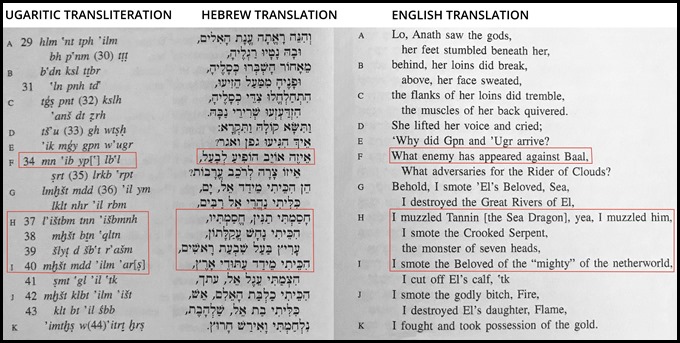
Image 3: Text from the goddess Anath epic referencing Baal’s rivals
The Hebrew Bible View of Death
The Hebrew Bible rejected these polytheistic concepts of an independent god of death and the rivalry between deities. According to Isaiah 45:7, G-d is the only source of both good and evil and is the master of life and death.
Cassuto in his commentary on the Pentateuch argued that the bible was written in the language of the common man, and thus, the personification of death and the allusions to his other emissaries such as the leviathan the slant serpent, leviathan the tortuous serpent, and the dragon as described in Genesis 1:21 and Isaiah 23:1 were remnants of the ideological war that the Hebrew bible waged against the pervasive culture that was infused with these concepts. In opposition to the dominant beliefs of the time, the scripture emphasized the notion that no other entity but G-d possessed the power to create and return man to dust Job 10:9.
A careful reading of the roles of the “destroyer”, “the harvester of souls”, the “angel of the Lord” who “smites” and “destroys” human beings in the scripture shows that they are always temporary messengers with limited scope of operation and windows of opportunity of action. In the few instances where death is personified as in Psalms 49:15; 91:3; Job 18:14, and Proverbs 16:14; 17:11 it is clear that he does not possesses any permanent power nor has the ability to terminate life of his own volition.
The Formation of the Axis of Evil
From a historical prospective, the western concept of an independent angel of death only emerged in the post-biblical period and can be attributed to the fusion of Egyptian, Canaanite, and Greek religions in the Hellenistic world.
This amalgam of deities the likes of Hades, Osiris, and Mavet formed the distinct figure of the angel of death who became associated with the terrifying demons and evil spirits commonly found in the ancient near east literature. By this time, this hybrid deity retained only a tangential association with the biblical concepts of the destroyer as a vehicle for delivering morally driven divine retribution.
This new manifestation of evil, death, cruelty, and wretchedness also incorporated the concept of the morally deficient, cunning, and deceitful snake from the garden of Eden (Genesis 3:1-14) and after several additions and enhancements such as evil spirits, demons, and Liliths, it appeared in the literature and theology of 2nd century BCE-1st century CE as בְּלִיַעַל Belial. One example dated to the second Temple period found in a Dead Sea Scroll titled the “Songs of the Sage”, contains the following apotropaic prayer:
“And, I the Sage, declare the grandeur of his radiance in order to frighten and terri[fy] all the spirits of the ravaging angels and the bastard spirits, demons, Liliths, owls”
In another Dead Sea scroll, a fragment entitled “Curses of Belial” contains a reference to Belial בְּלִיַעַל (wicked or worthless), “sons of Belial”, the “angel of the Pit” and a “spirit of destruction” and carries the following curses against him and his lot:
“The Community Council shall say together in unison, ‘Amen. Amen.’ Then [they] shall curse Belial and all his guilty lot, and they shall answer and say, ‘Cursed be [Be]lial in his devilish and damned be he in his guilty rule.”
From the 2nd century CE through the early middle ages, Belial became affiliated with the devil in gospel texts and assumed a central and permanent role of the ultimate evil that seeks to seduce, sabotage, harm, and fight mankind. He is described as a rebellious fallen angel who rose against G-d and challenged his sovereignty.
Lacking direct biblical sources to support these assertions, some prominent theologians such as Cyprian, Clement of Alexandria, Augustine, Dionysius the Pseudo-Areopagite, and John of Damascus, Origen used unrelated passages such as Isaiah 14:12-15 to buttress their claims:
“And thou saidst in thy heart: ‘I will ascend into heaven, above the stars of G-d will I exalt my throne, and I will sit upon the mount of meeting, in the uttermost parts of the north;
I will ascend above the heights of the clouds; I will be like the Most High.”
Image 4: L-R Cyprian, Clement of Alexandria, Augustine, Dionysius, John of Damascus, Origen
The absence of supporting scriptural provenance didn’t stop the widespread dissemination of these daemonic ideas. Now instead of using biblical exegesis, writers resorted to speculative fiction to describe in detail the devil’s nature, domain, powers, and attributes. For example, Cyprian in his Treatise 10.4 claimed that the reason for the fall of Satan was:
“When he saw human beings made in the image of God, he broke forth into jealousy and malevolent envy” and thus rebelled against God.
Where the biblical world experienced a rare and indirect interaction with a “destroyer”, the religious universe of late Roman period swarmed with pitched battles between angels and demons, with humanity caught in between. Even the most mundane matters including eating, marriage, and bearing children became a battleground between good the evil. Origen in his Commentary on Matthew and Clement of Alexandria in his Stromata discuss these prevailing contemporary views including one that the institute of marriage “is fornication” and that it was “introduced by the devil”.
By now, the previous narrative of the “destroyer” as mere messenger or the delivery mechanism for divine retribution regressed to the ancient idolatrous relationship between factions of warring deities reflected in the Enuma Elish. The new pantheon of the devil and his cohorts grow steadily and by the 6th century CE authors were dedicating entire treatises to the cataloging of the demonic and angelic realms. Early medieval writers such as Pseudo-Dionysius the Areopagite also produced an encyclopedic works such as the The Celestial Hierarchy that classified angels by function and utility and discussed in great details subjects such as:
“Which is the first Order of the Heavenly Beings? which the middle? and which the last? How many, and of what sort, are the Orders of the super-celestial Beings, and how the Hierarchies are classified amongst themselves”
Image 5: The Celestial Hierarchy of Pseudo-Dionysius the Areopagite
By the Second Council of Nicaea in 787 CE, angles and saints (who are in affect demi-angles) became official objects of veneration and adoration and patrons of every mundane daily function such as food preparation, travel, and athletic activity.
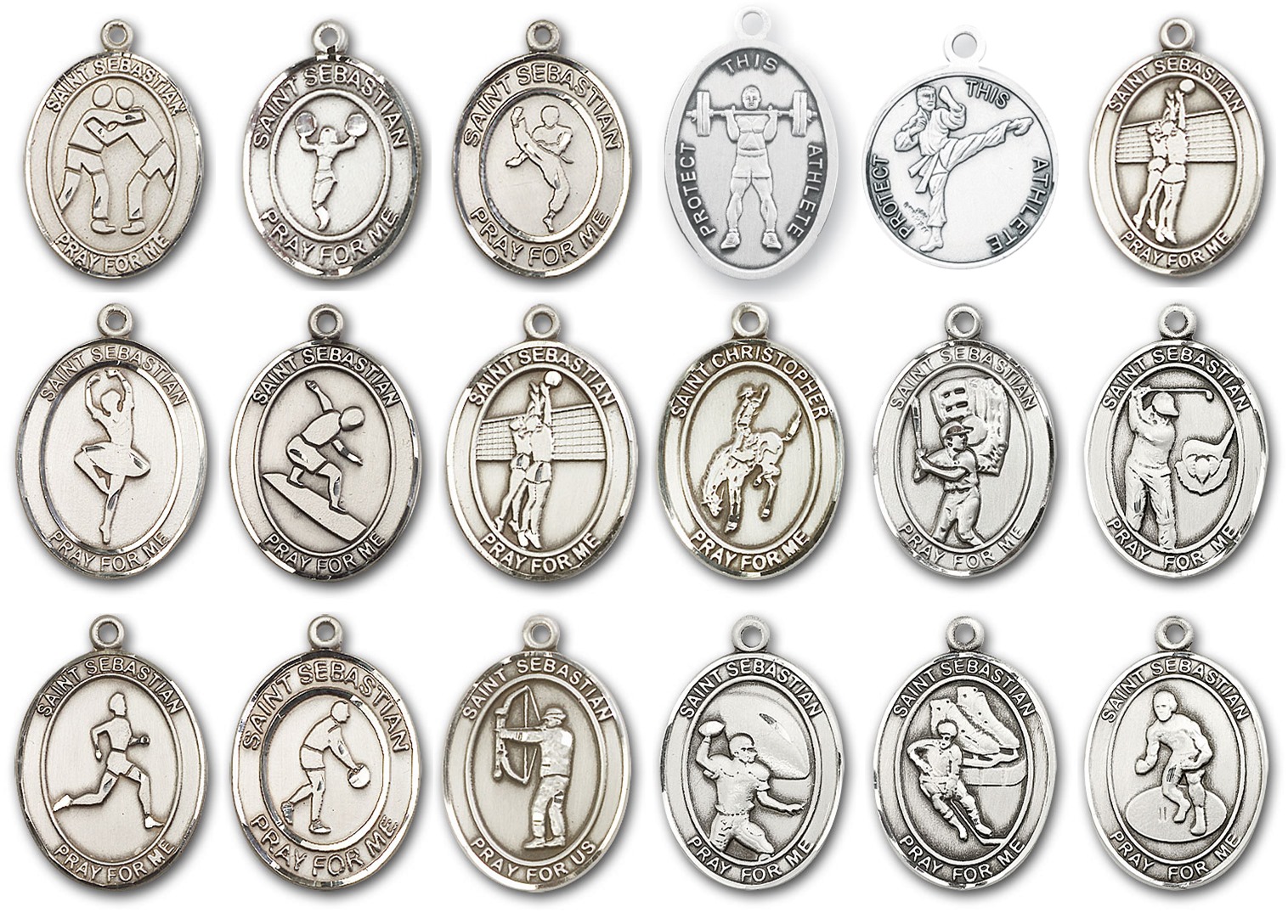
Image 6: The St. Sebastian athletic emulates
By the middle ages, Archangel Michael acquired an affiliation with certain functions of the angel of death who—among other responsibilities—was tasked with evaluating and carrying the souls of all the deceased to heaven and fighting Satan. Just like in the case of the Egyptian Anubis, Byzantine and Catholic liturgy and art assigned Michael the role of weighing the souls of the dead with his scales. Another popular depiction of him is being armed with a spear or sword and locked in mortal combat with Satan—In which for some unknown reason, he consistently fails to win a decisive victory.
Image 7: Depiction of Archangel Michael in medieval and renaissance art

Image 8: Anubis weighing the souls of the dead
From the late middle ages through the late renaissance, we find an increasing a number of books on demonic classification. These works progressively become more elaborate. They detail the nature of each demon, their MO, the category of sins which they impart to their human victims, the month in which their power is strongest, and the saints that are their adversaries. Some of the more notable classification works from this period are:
The 1410 Lantern of Light by John Wycliffe. A daemon classification system that was based on the Seven Deadly sins and the following association of sin and demon:
- Lucifer – Pride
- Beelzebub (Belzebub) – Gluttony (Glotouns)
- Satan (Sathanas) – Wrath (Wraþþe)
- Leviathan (Leviathan) – Envy (Envous)
- Mammon – Greed (Auarouse)
- Belphegor – Sloth (Slow)
- Asmodeus – Lust (Leccherouse)
The 1459 Fortalitium Fidei by Alphonso de Spina. In the chapter on demons, Asphonso took daemon accounting to a new level or precision and stated that the total number of angels who sided with Lucifer’s revolt against G-d was 133,306,668. He also classified demons based on the following criteria:
- Incubi and succubi
- Familiars
- Drudes
- Cambions born from the union of a demon with a human being (AKA witches and warlocks).
- Demons that induce old women to attend Witches’ Sabbaths
The c. 1486 Malleus Maleficarum (Hammer of Witches). This most ‘thorough’ treatise on witchcraft and demons was written by two German Dominican monks, Heinrich Kramer and Jacob Sprenger and came with an official papal bull. The book sold more copies than any other book except the Bible until 1678. It was single-handedly responsible for the murder of hundreds of thousands (if not millions) of innocent woman and young girls across Europe. According to the book, it has been proven that it is normal for many woman to embrace sorcery and “to perform filthy carnal acts with demons.”
The 1533 De Occulta Philosophia by Cornelius Agrippa. A demon classification system based on the number 4 and the cardinal directions that included:
The 1591 The Confessions of Warlocks and Witches by Peter Binsfeld. A demon classification system similar to the Lantern of Light’s seven deadly sins but with a slight variation in the classification as follows:
- Lucifer – Pride
- Mammon – Greed
- Asmodeus – Lust
- Leviathan – Envy
- Beelzebub – Gluttony
- Satan – Wrath
- Belphegor – Sloth
The 1597 Daemonologie by King James (the same James who later sponsored the translation of the Bible to English better known as the “King James Bible”). A demon classification treatise in three volumes dedicated to the study of demonology and the methods demons used to inflict and torment mankind. The classification included:
- Spectra – Used to describe spirits that trouble houses or solitary places
- Oppression – Used to describe spirits that follow upon certain people to outwardly trouble them at various times of the day
- Possession – Used to describe spirits that enter inwardly into a person to trouble them
- Fairies – Used to describe spirits that prophesy, consort, and transport
The books also covered important topics such as werewolves and vampires. It was aimed at educating the ignored citizenry of England on the history, practices and implications of practicing sorcery and all things demonic.
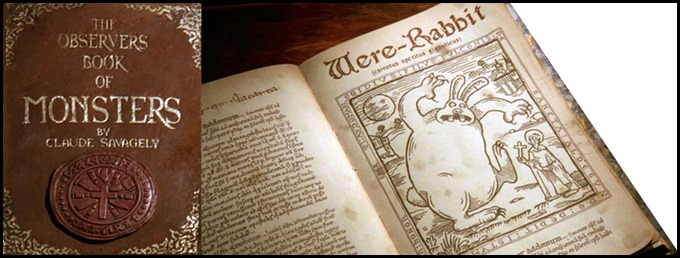
Image 9: The Observer’s Book of Monsters by Claude Savagely
The 1608 Compendium Maleficarum by Francesco Maria Guazzo (a rework/rip-off of the the 11th century Classification of Demons by Michael Psellus). The work classified demons into:
- Empyreal – Fiery
- Aerial – Airborne
- Subterranean – Underground
- Lucifugous – Heliophobic
- Aqueous – Water based
- Terrene – On the ground
The 1686 Semiphoras and Schemhamforas by Andreas Luppius which was based on a similar system of classification as “De Occulta Philosophia” but instead of 4 used the number 9 and had the following orders of demons:
- False spirits
- Spirits of lying
- Vessels of iniquity
- Avengers of wickedness
- Jugglers
- Airy powers
- Furies sowing mischief
- Sifters or triers
- Tempters or ensnarers

Image 10: A sampling of a few demonic classification books from the 14th-17the centuries
The Jewish View
Some ancient and modern Jewish scholars, like Richard Friedman, also erroneously made the correlation between the “destroyer” and the angel of death. These errors were based on anecdotal evidence in the secondary literature and art. Friedman for example came to this conclusion based on a sword bearing figure in one of the illustrations on the Golden Haggadah whom he identified as the angel of death (top right corner of Image 11). This led him to conclude that the authors of the 14th century Haggadah must have also subscribed to the textual and theological interpretation that the “destroyer” was in fact the angel of death.
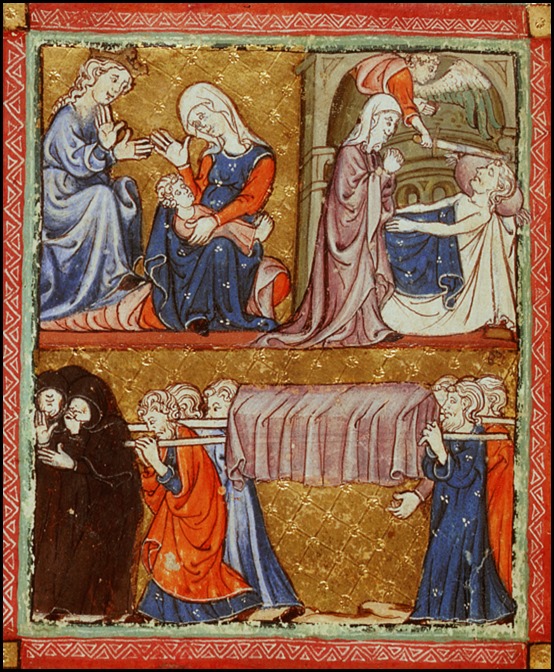
Image 11: Illustration from the Golden Haggadah (Note figure in top right corner)
Ironically, the same Golden Haggadah that is used as proof for the existence of the angel of death contains a hand written note, which is a combination of some biographical details and poetry. In line 6 of the note it reads:
״…בחוכמה בתבונה ובדעת, חי העולמים יושב המרומים ומשגיח התחתונים אחד ונעלם אלקי חיים ומלך עולם…״
“…In wisdom, understanding, and knowledge, the creator of the universe who sits on high and oversees the underworld (i.e. the dead), who is one and unseen, the king of the world…”
From the context it’s clear that the writer of the text (and likely the owner of the book) did not buy into the angel of death idea or his ability to challenge the sovereignty of G-d.
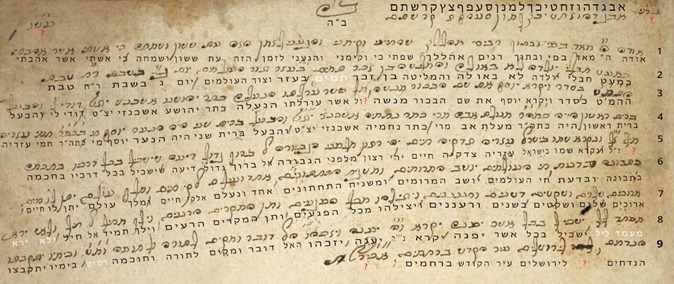
Image 12: The hand written note in cursive script in the Golden Haggadah and its in-line transliteration to block script
Why The Confusion?
I think that the confusion about the meaning of the “destroyer” in the verses in Exodus can be attributed to the misreading of the text and failure to identify the wordplay and the variant usage of the root N-G-F נגפ. This root and its derivatives can be read as smite, obstacle, defeated, plague, blow, and strike. Depending on its usage and context, it can also be used as a noun such as in ‘bubonic plague’ and as a verb such as in ‘I’ve been plagued by ill health”. Keeping this in mind, we can try to reconcile the contextual problem by reading verses 12:12-29 as follows:
12–For I will go through the land of Egypt in that night, and will smite [וְהִכֵּיתִי] all the first-born in the land of Egypt, both man and beast; and against all the gods of Egypt I will execute judgments: I am G-d.
13–And the blood shall be to you for a token upon the houses where ye are; and when I see the blood, I will pass over you, and there shall no plague [נֶגֶף] be upon you to destroy [לְמַשְׁחִית] you, when I smite [בְּהַכֹּתִי] the land of Egypt.
22–Take a bunch of hyssop, and dip it in the blood that is in the basin, and strike the lintel and the two side-posts with the blood that is in the basin; and none of you shall go out of the door of his house until the morning.
23–For G-d will pass through to smite [לִנְגֹּף] the Egyptians; and when He seeth the blood upon the lintel, and on the two side-posts, G-d will pass over the door, and will not suffer the destroyer [הַמַּשְׁחִית] to come in unto your houses to smite [לִנְגֹּף] you.
27–that ye shall say: It is the sacrifice of G-d’s Passover, for that He passed over the houses of the children of Israel in Egypt, when He smote [בְּנָגְפּוֹ] the Egyptians, and delivered our houses.’ And the people bowed the head and worshipped.
29–And it came to pass at midnight, that G-d smote [הִכָּה] all the firstborn in the land of Egypt, from the first-born of Pharaoh that sat on his throne unto the first-born of the captive that was in the dungeon; and all the first-born of cattle.
Putting all of these elements together gives us: the destroyer [הַמַשְׁחִית] smites [לִנְגֹּף] using a plague [מגיפה] the first born in Egypt via “the destroyer’s plague” [ נֶגֶף לְמַשְׁחִית], with plague [נֶגֶף].
A similar word play in English would be along the lines of:
The striker (destroyer), stroke (inflicted), the stricken (victims), with a strike (affliction).
So, G-d Himself “passes through” (עָבַר) the land of Egypt and smites all the firstborn in the land of Egypt. This is accomplished via “the destroyer” which happens to be the plague, that plagues the firstborn of Egypt with a plague. In this context, the destroyer is G-d’s mechanism for delivering the destruction.
To paraphrase Sherlock Holmes: “This Exodus story stands flat-footed upon the ground and there it must remain. The world is big enough for us. No angel of death need apply.”
Considering this, I propose a practical alternative reading of the “destroyer” to be a software function that looks like the following:
Function Destroyer(Identity, DateTime, Agent, Cause, Delay, Reason, Place, Duration, Awareness, Terminate)
Identity = Identity of the deceased (VictimID)
DateTime = Date&Time of death (from the creation of the universe)
Agent = Delivery Mechanism (e.g. Carbon monoxide)
Cause = Actual cause of death (see CDC codes)
Delay = In hours:minutes:seconds
Reason = Triggering event
Place = Location of victim in universal XYZ coordinates
Duration = Timed (use ‘Delay’ as an offset) or Permanent
Awareness = Premonition value 0-9 about the impending death
Terminate = A real-time abort flag (True or False)
End Function
Module TenthPlague
KillFirstBorn()
DeceptionInvolved = Use cases like Egyptians using fake blood
or paint on their door, hiding in an Israelite home, etc.
‘Test if everything is Kosher
If BloodFoundOnDoor = true DeceptionInvolved = false Then
‘Nothing to see here, move along…
Exit
‘Are they cheating?
ElseIf DeceptionInvolved = True Then
‘Is there a first born inside?
If FirstBornPresent and Terminate = False Then
‘Get’em!
Destroyer(VictimID,4.54×109,Anthrax,Pneumonia-Cardiac
Arrest,0,Disobedience10,30°0’47.001656”
N 31° 12’31.870834” E 12.920,Permanent,0,False)
End If
‘There is no blood on the door or we are in the open
ElseIf BloodFoundOnDoor = False Then
‘Is there a first born present?
If FirstBornPresent and Terminate = False Then
Get’em!
Destroyer(VictimID,4.54×109,Anthrax,Pneumonia-Cardiac
Arrest,0,Disobedience10,30°0’47.001656”
N 31° 12’31.870834” E 12.920,Permanent,0,False)
End If
End If
End Sub
End Module
The ‘destroyer’ is no more good or bad than any other types of delivery system and has no more free will than an envelope delivering a letter. Thus, the destroyer is a mere mechanism that G-d uses to execute judgment upon Egypt, Israel, and others. it is not a separate entity. The same dual reference to G-d’s action and His ‘delivery mechanism’ can be seen in Samuel 15-16, where G-d sent a plague to punish Israel:
“So G-d sent a pestilence upon Israel from the morning even to the time appointed; and there died of the people from Dan even to Beer-sheba seventy thousand men.”
וַיִּתֵּן יְהוָה דֶּבֶר בְּיִשְׂרָאֵל, מֵהַבֹּקֶר וְעַד-עֵת מוֹעֵד; וַיָּמָת מִן-הָעָם, מִדָּן וְעַד-בְּאֵר שֶׁבַע, שִׁבְעִים אֶלֶף, אִישׁ
and in Samuel 24:16, where the “destroyer” is described as:
”And when the angel stretched out his hand toward Jerusalem to destroy it, G-d repented Him of the evil, and said to the angel that destroyed the people: ‘It is enough; now stay thy hand.’ And the angel of G-d was by the threshing-floor of Araunah the Jebusite.”
וַיִּשְׁלַח יָדוֹ הַמַּלְאָךְ יְרוּשָׁלִַם, לְשַׁחֲתָהּ, וַיִּנָּחֶם יְהוָה אֶל-הָרָעָה, וַיֹּאמֶר לַמַּלְאָךְ הַמַּשְׁחִית בָּעָם רַב עַתָּה הֶרֶף יָדֶךָ; וּמַלְאַךְ יְהוָה הָיָה, עִם-גֹּרֶן האורנה (הָאֲרַוְנָה) הַיְבֻסִי
Conclusion
It is ironic, that the same pagan ideas that the scripture fought so hard to invalidate are even more popular today then they were 3500 years ago. The prevalence of psychic readers on every street corner, Satanism in movies, literature, and popular culture just show you that regardless of how clear the message is, there are always creative ways to misinterpret and change it.
Image 13: Satanic and demonic motifs in mainstream entertainment account for 5%-15% of movies
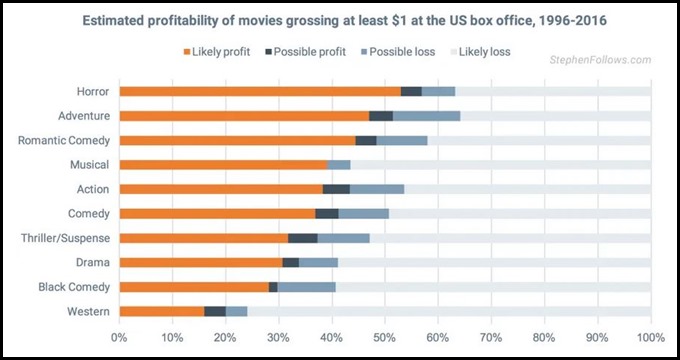
Image 14: The profitability of Satanism
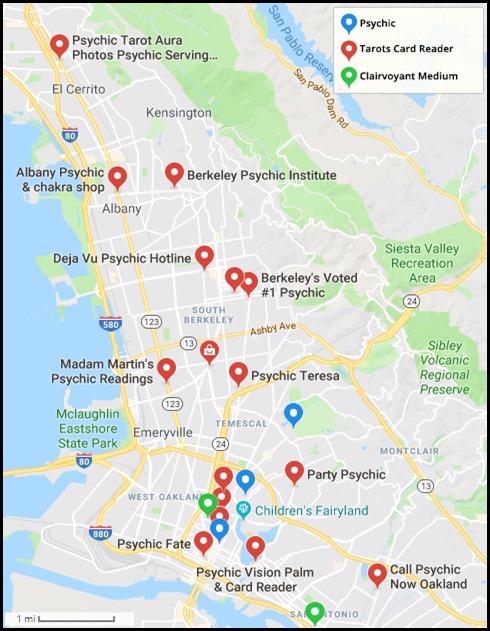
Image 14: Distribution and density of Psychics, Tarot Card Readers, and Clairvoyant Mediums in Berkeley
All of this makes you wonder: what is it about these simple four self-explanatory statements that can possibly be confusing?
- “I will pass through the land of Egypt”, I and not an angel;
- ”And I will smite every first-born in the land of Egypt”, I and not a seraph;
- ”And I will carry out judgments against all the gods of Egypt”, I and not a messenger;
- ”I G-d”, and none other!
Happy Passover and Easter.
*** Special thanks to Dr. Eli Alshech for his contribution to the translation of the introduction to the Golden Haggadah
The Golden Hagaddah – Credit the British Library Add. MS 27210
He Smote the First Born of Egypt – Handel Israel In Egypt
Campin’ In Canaan’s Happy Land – Stanley Brothers Old Time Camp Meeting Album
I have left the land of bondage with its earthly treasures
I’ve journeyed to the place where there is love on every hand
I’ve exchanged the land of heartaches for the land of pleasure
I’m camping, I’m camping, in Canaan’s happy land
Every day I’m camping (camping) in the land of Canaan (Canaan)
And in rapture I survey its wondrous beauty grand (Oh, Glory)
Glory, hallelujah (I have) found the land of promise
(And I’m) camping, I’m camping, in Canaan’s happy land
Out of Egypt I have traveled through the darkness dreary
Far over hills and valleys and across the desert sands
Thoughts of land that’s safe and homeward I shall not go weary
I’m camping, I’m camping, in Canaan’s happy land
Yes I’ve reached the land of promise with the saints of glory
My journey ended in a place so lovely and so grand
I’ve been led by Jesus to this blessed land of story
I’m camping, I’m camping, in Canaan’s happy land
The Promised Land – Hymn 128 Sacred Harp Tunebook
On Jordan’s stormy banks I stand,
And cast a wishful eye,
To Canaan’s fair and happy land,
Where my possessions lie.
I am bound for the promised land,
I am bound for the promised land,
Oh, who will come and go with me,
I am bound for the promised land.
Oh, the transporting, rapt’rous scene,
That rises to my sight,
Sweet fields arrayed in living green,
And rivers of delight.
I am bound for the promised land,
I am bound for the promised land,
Oh, who will come and go with me,
I am bound for the promised land.
Filled with delight, my raptured soul
Would here no longer stay!
Though Jordan’s waves around me roll,
Fearless I’d launch away.
I am bound for the promised land,
I am bound for the promised land,
Oh, who will come and go with me,
I am bound for the promised land.
The Curse of Belial – Dead Scroll 394, 4Q2864Q287, fragment 6
(1) The Community Council shall say together in unison, ‘Amen. Amen.’ Then [they] shall curse Belial (2) and all his guilty lot, and they shall answer and say, ‘Cursed be [Be]lial in his devilish (Mastematic) scheme, (3) and damned be he in his guilty rule. Cursed be all the spir[its of] his Mot in their Evil scheme. (4) And may they be damned in the schemes of their [un]clean pollution. Surely [they are the to]t of Darkness. Their punishment (5) will be the eternal Pit. Amen. Amen. And cursed be the Evi[1] One [in all] of his dominions, and damned be (6) all the sons of Bel[ial] in all their times of service until their consummation [forever. Amen. Amen.’] (7) And [they are to repeat and say, ‘Cursed be you, Angel of the Pit and Spir[it of Destruction in al[1] the schemes of [your] gu[ilty] inclination, (8) [and in all the abominable [purposes] and counsel of [your] Wick[edness. And damned be you in [your] [sinful] d[omi]n[ion] (9) [and in your wicked and guilty rule,] together with all the abom[inations of She]ol and [the reproach of the P]it, (10) [and with the humiliations of destruction, with [no remnant and no forgiveness, in the fury of [God’s] wrath [for]ever [and ever.] Amen. A[men.] (11) [And cursed be al]1 who perform their [Evil schemes,] who establish your Evil purposes [in their hearts against] (12) Go[d’s Covenant,] so as to [reject the words of those who see] his [Tru]th, and exchange the Judge[ments of the Torah…]
Targum of Yonatan ben Uzziel (in Aramaic)
Targum (translation) Jonathan is a western targum of the Torah (Pentateuch) from the land of Israel as opposed to the eastern Babylonian Targum Onkelos (which was written by the nephew of the Roman emperor Titus). Its correct title was originally Targum Yerushalmi (Jerusalem Targum), which is how it was known in medieval times. But because of a printer’s mistake it was later labeled Targum Jonathan, in reference to Jonathan ben Uzziel. Some editions of the Pentateuch continue to call it Targum Jonathan to this day.
Most scholars refer to the text as Targum Pseudo-Jonathan. This targum also includes Aggadic material (non legal or narrative material, as parables, maxims, or anecdotes) collected from various sources as late as the Midrash Rabbah and the Talmud. It is a combination of a commentary and a translation. In the translation portions, it often agrees with the Targum Onkelos. The date of its composition is disputed. It cannot have been completed before the 633 CE Arabic conquest as it refers to Mohammad’s wife Fatimah, but might have been initially composed in the 4th Century CE. However, some scholars date it in the 14th Century (which would make this document contemporary with the Golden Haggadah).
The Goddess Anath: Canaanite Epics of the Patriarchal Age – Umberto Cassuto
The Observer’s Book of Monsters – Gavin Lines
Copyright 2019 Yaacov Apelbaum, All Rights Reserved.
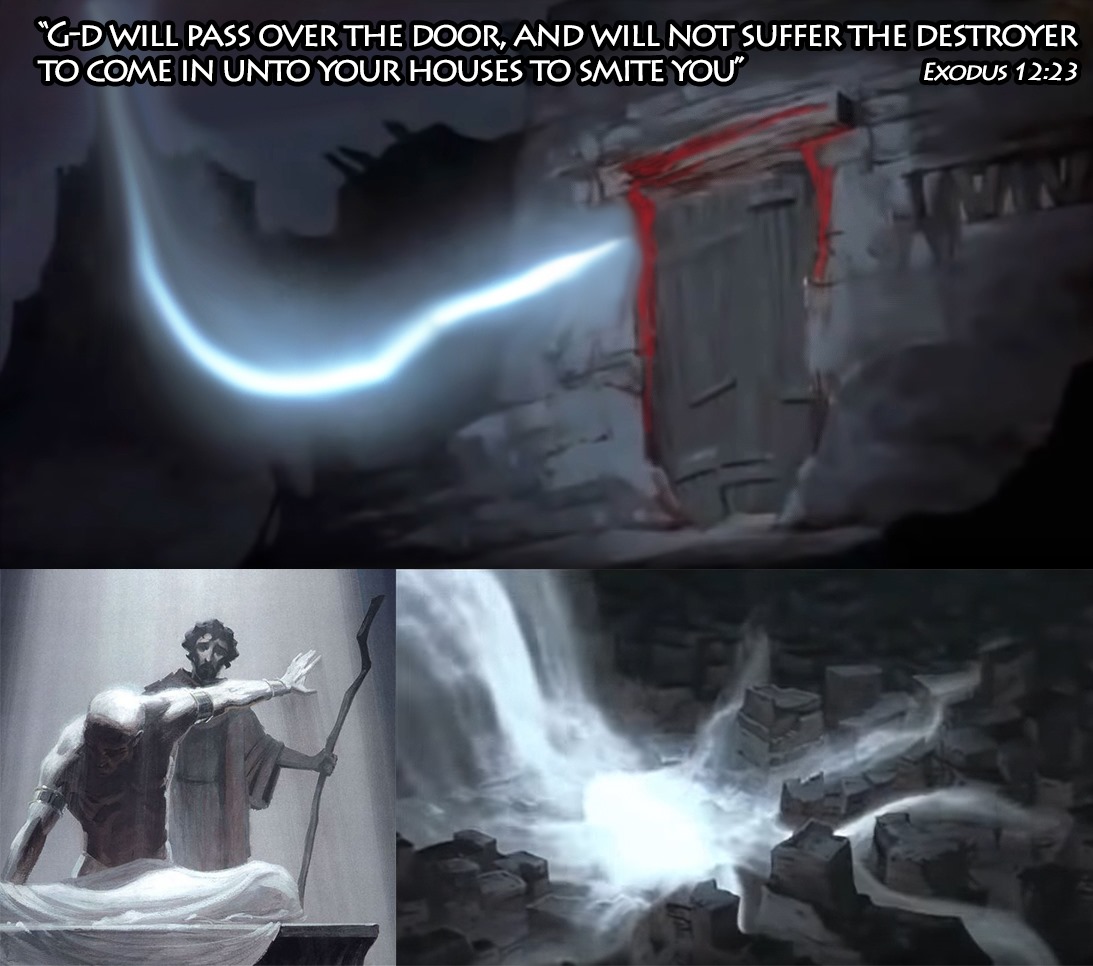
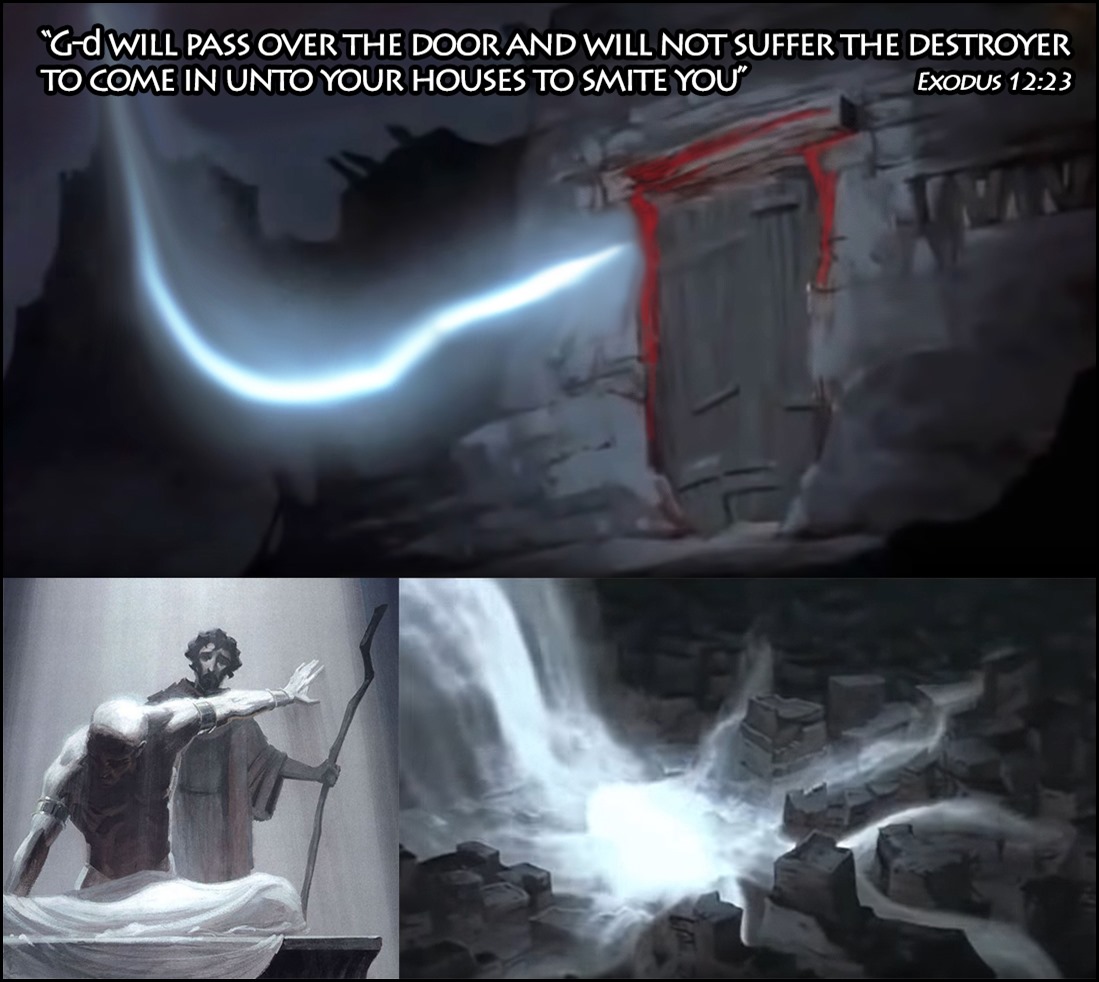

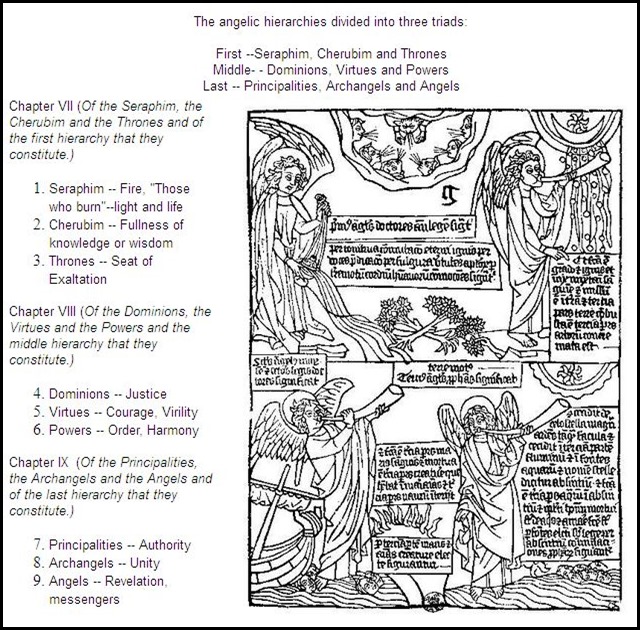
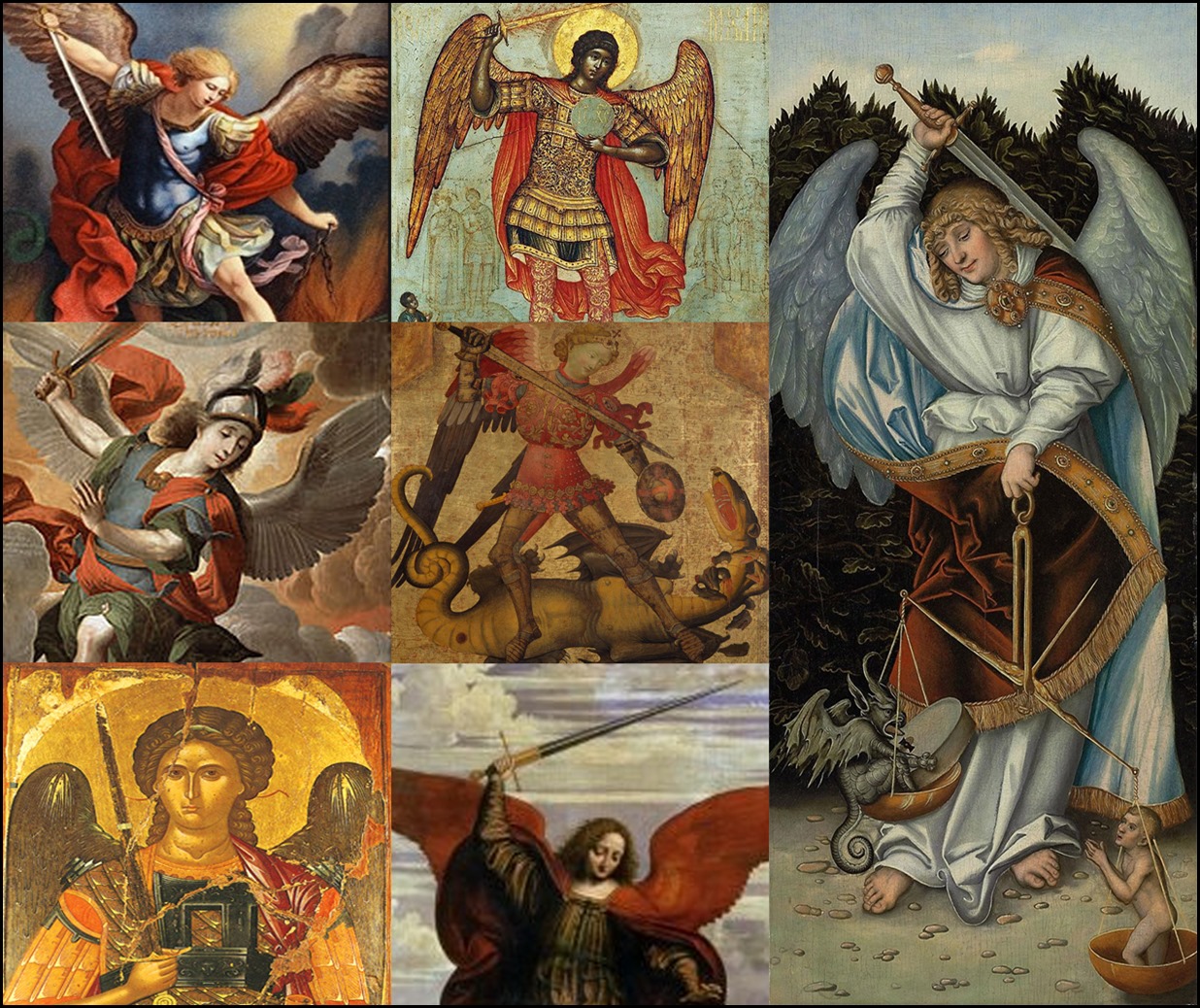
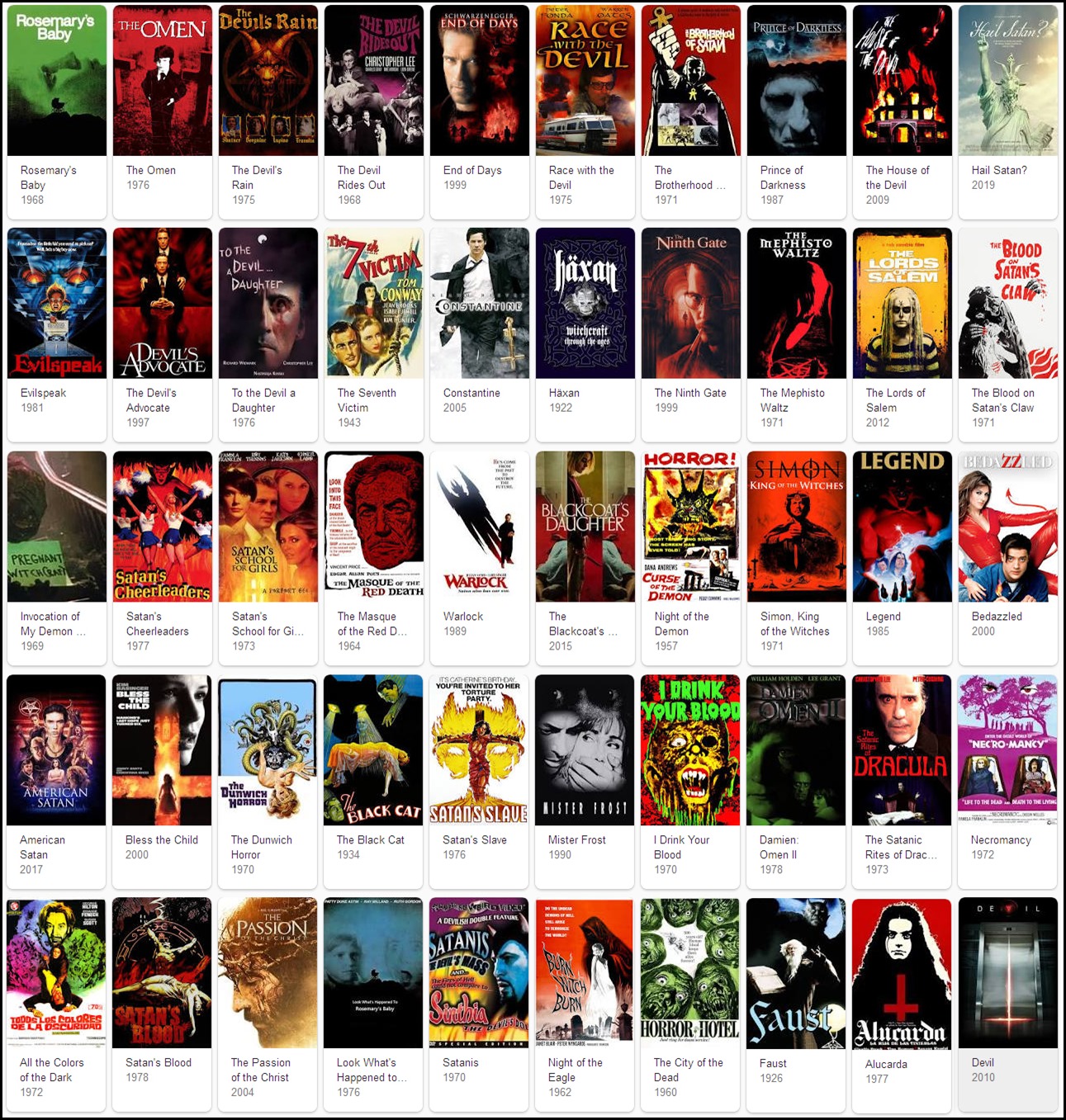
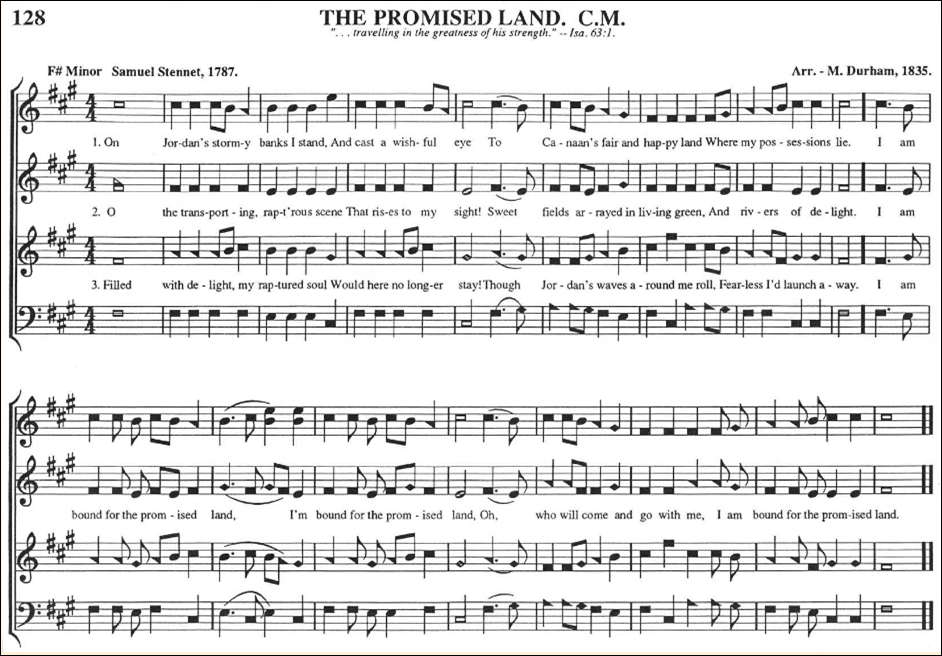
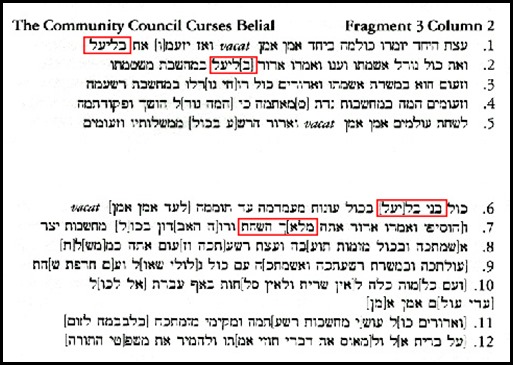
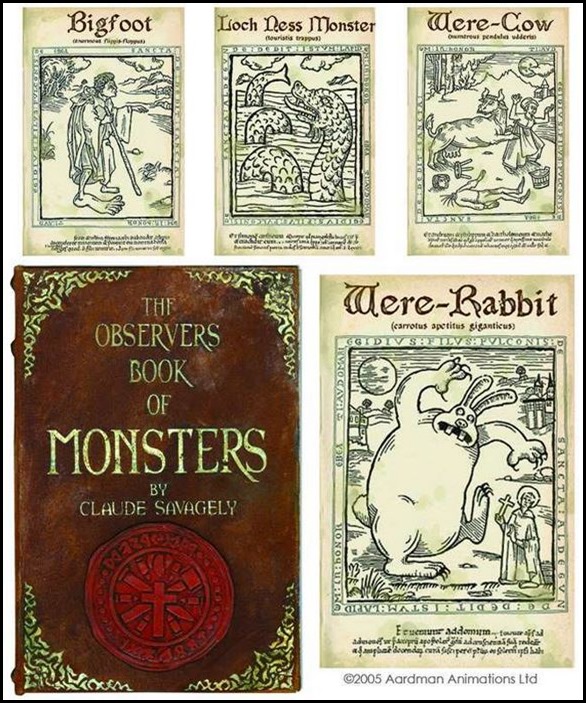
You’ve once again significantly expanded my knowledge and understanding.
Thanks for all you do!
Thank you seabrznsun,
You may want to check out Claude Savagely’s “The Observer’s Book of Monsters” for some deeper insight :-)